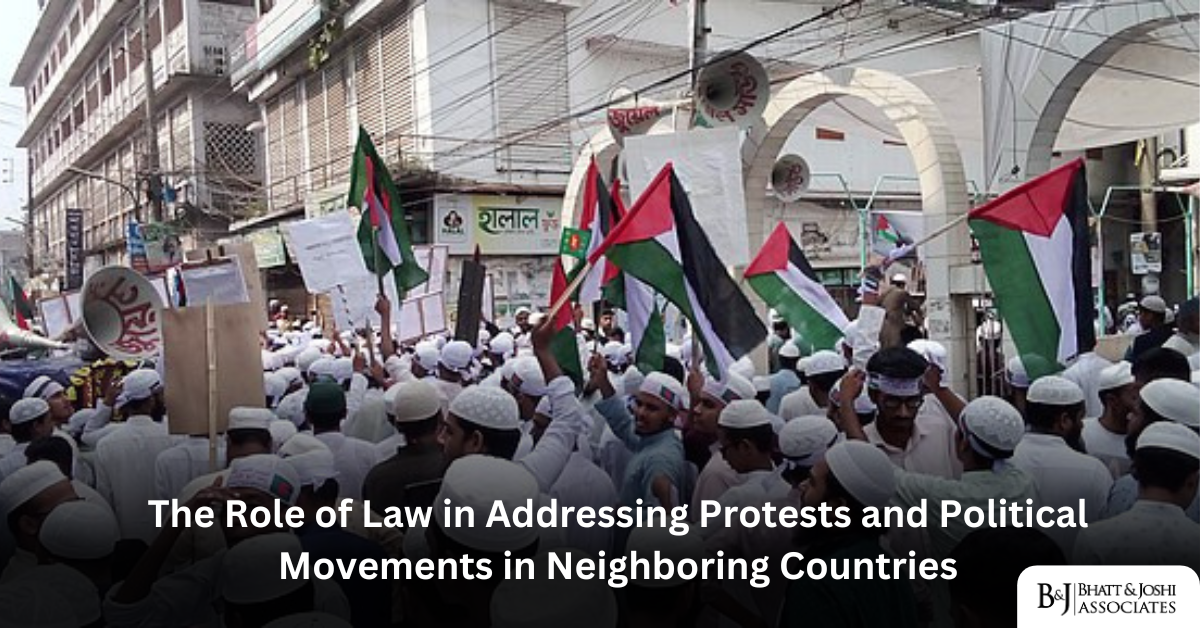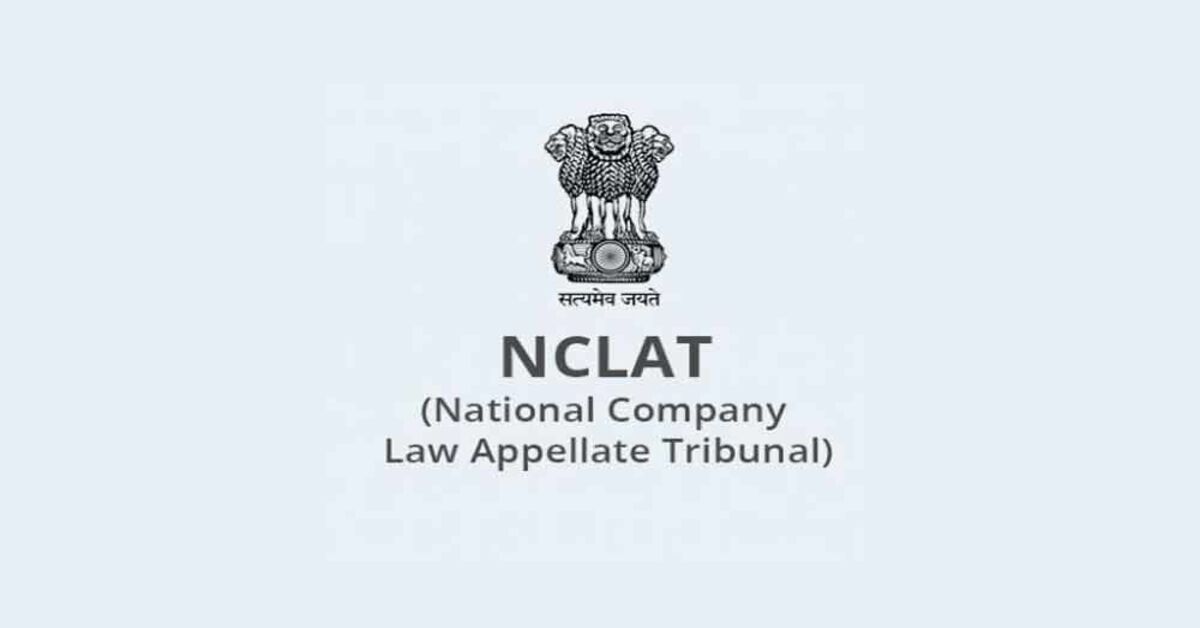Introduction
Protests and political movements are a fundamental aspect of democratic societies, serving as a mechanism for the public to voice dissent, demand accountability, and seek redress for grievances. The legal frameworks regulating these activities are pivotal in ensuring that they unfold within the bounds of law while respecting fundamental freedoms. Neighboring countries often share historical, cultural, and political ties, leading to a comparative interest in how laws address such phenomena. This article delves into the role of law in addressing protests and political movements in neighboring countries, analyzing regulatory frameworks, key legal provisions, case laws, and judicial interpretations that shape this domain.
Legal Frameworks Regulating Protests and Political Movements
The regulation of protests and political movements typically involves a combination of constitutional provisions, statutory laws, and administrative regulations. Constitutions often enshrine the right to peaceful assembly, freedom of speech, and association as fundamental rights, subject to reasonable restrictions in the interest of public order, sovereignty, and national security. Neighboring countries, influenced by similar colonial legacies or legal traditions, often adopt comparable legal frameworks, though their implementation may vary significantly.
For instance, in India, the right to peaceful assembly is guaranteed under Article 19(1)(b) of the Constitution, subject to reasonable restrictions under Article 19(3). Similarly, Pakistan’s Constitution recognizes the right to peaceful assembly under Article 16, with restrictions aimed at safeguarding public order. In Bangladesh, Article 37 of the Constitution provides for the right to assembly, with similar qualifications. While these constitutional guarantees offer a foundational framework, statutory laws such as the Criminal Procedure Code, Police Acts, and specific protest-related legislation further delineate the scope and limitations of these rights.
In Sri Lanka, the Constitution guarantees freedom of speech and peaceful assembly under Article 14. However, the implementation of these rights is often constrained by emergency laws, including the Prevention of Terrorism Act (PTA), which has been criticized for its broad and vague provisions. Similarly, Nepal’s Constitution ensures the right to peaceful assembly under Article 17, reflecting the influence of democratic movements in shaping its legal landscape. Bhutan, while relatively less exposed to large-scale protests, incorporates provisions within its Constitution to ensure peace and order while allowing limited avenues for public dissent.
Statutory Regulations and Administrative Measures
In most jurisdictions, the regulation of protests involves statutory provisions that define permissible activities, outline procedures for obtaining permissions, and prescribe penalties for violations. For instance, the Indian Penal Code (IPC) contains provisions addressing unlawful assemblies (Sections 141-145), rioting (Sections 146-148), and public nuisances (Sections 268-294). The Criminal Procedure Code (CrPC) empowers executive magistrates to impose Section 144 orders, prohibiting gatherings in specified areas to prevent public disorder.
In Pakistan, the Maintenance of Public Order Ordinance and the Pakistan Penal Code play similar roles in regulating assemblies and addressing breaches of peace. Bangladesh relies on comparable provisions within its Penal Code and CrPC, alongside specific regulations like the Special Powers Act. The legal landscape in Sri Lanka is shaped significantly by emergency regulations that grant extensive powers to law enforcement to control assemblies. Nepal relies on a combination of its Public Offenses Act and Police Act to manage public gatherings.
Administrative measures often include the issuance of permits for protests, the deployment of police forces to maintain order, and the imposition of curfews or prohibitory orders in sensitive areas. While these measures aim to balance the right to protest with public safety, they frequently spark controversy regarding their proportionality and potential misuse. For example, the use of blanket bans or excessive force during protests has been a recurring issue in many countries, undermining public trust in governance.
Judicial Interpretations and Case Laws
Judicial interpretations play a critical role in defining the boundaries of protest rights and addressing conflicts between state authority and individual freedoms. Courts in neighboring countries have consistently grappled with cases involving the regulation of protests, offering landmark judgments that shape legal standards.
India
In the landmark case of Maneka Gandhi v. Union of India (1978), the Supreme Court of India expanded the interpretation of fundamental rights, emphasizing the importance of procedural fairness and proportionality in restricting freedoms. More recently, in Amit Sahni v. Commissioner of Police (2020), the Court addressed the Shaheen Bagh protests against the Citizenship (Amendment) Act, highlighting the need to balance protest rights with public inconvenience.
The Supreme Court’s judgment in Mazdoor Kisan Shakti Sangathan v. Union of India (2018) emphasized the need to designate specific areas for protests to avoid disruptions while safeguarding the right to peaceful assembly. These rulings underscore the judiciary’s attempt to mediate between competing interests, ensuring that restrictions are reasonable and non-arbitrary.
Pakistan
In Pakistan, the judiciary has frequently intervened in cases involving protests and political movements, reflecting the country’s volatile political landscape. In Sheikh Rashid Ahmed v. Government of Pakistan (2019), the Islamabad High Court upheld the right to peaceful assembly but emphasized the state’s duty to prevent violence and disruption. Similarly, in cases like Imran Khan v. Federation of Pakistan, courts have navigated complex political dynamics, balancing democratic freedoms with public order considerations.
Bangladesh
Bangladeshi courts have also played a significant role in addressing issues arising from protests. In BNP v. Government of Bangladesh (2013), the judiciary addressed the balance between political expression and public safety during large-scale demonstrations. The Court’s rulings often emphasize the need for dialogue and peaceful resolution of disputes, urging both authorities and protestors to adhere to constitutional principles.
Sri Lanka and Nepal
In Sri Lanka, cases like Singarasa v. Attorney General have highlighted the tension between emergency laws and fundamental freedoms. The judiciary has often been criticized for deferring to the executive during periods of political unrest. In Nepal, landmark decisions such as Rajendra Mahato v. Government of Nepal reflect the judiciary’s efforts to uphold protest rights amidst political transitions.
International Influence and Regional Dynamics
The role of international human rights norms and regional dynamics cannot be overlooked in shaping the regulation of protests and political movements. Instruments like the International Covenant on Civil and Political Rights (ICCPR) influence domestic legal frameworks, particularly in countries that are signatories. Provisions under Articles 19, 21, and 22 of the ICCPR, guaranteeing freedom of expression, peaceful assembly, and association, often serve as benchmarks for assessing domestic laws.
Regional dynamics also play a crucial role, particularly when protests and political movements in neighboring countries are influenced by shared grievances or cross-border solidarity. For instance, protests triggered by common issues such as environmental concerns or labor rights often lead to coordination and cooperation among neighboring nations. In such cases, international law and bilateral agreements often complement domestic legal frameworks.
Challenges in Implementation and Enforcement
While legal frameworks provide a foundation for regulating protests, their implementation often poses significant challenges. Inconsistent enforcement, allegations of excessive force, and concerns over arbitrary restrictions frequently undermine public trust in the legal system. Cases of police brutality, prolonged detentions, and internet shutdowns during protests highlight the tension between maintaining order and respecting rights.
In India, incidents like the police action during the Jallianwala Bagh centenary protests or the use of force during farmer protests have sparked widespread criticism. In Pakistan, the frequent invocation of the Maintenance of Public Order Ordinance to detain political activists has been criticized as a tool for suppressing dissent. Similarly, in Bangladesh, crackdowns on opposition rallies and the use of preventive detention laws have raised concerns about the erosion of democratic space.
In Sri Lanka, the implementation of emergency laws has often led to allegations of human rights violations, particularly during protests against economic hardships or political crises. Nepal, despite its progressive constitutional framework, faces challenges in ensuring effective policing of protests without resorting to excessive force.
The Way Forward: Strengthening Legal Protections
To address these challenges, there is a need for reforms aimed at strengthening legal protections for protest rights. Ensuring that restrictions on protests are proportionate, transparent, and subject to judicial review is critical. Policymakers must also focus on training law enforcement agencies to manage protests in a manner that respects human rights.
Regional cooperation and dialogue can also play a crucial role in addressing issues related to protests and political movements in neighboring countries. By sharing best practices and aligning legal standards with international norms, countries can develop a more consistent and rights-respecting approach to regulating such movements.
Conclusion: Balancing Protest Rights and Public Order
The role of law in addressing protests and political movements in neighboring countries reflects a delicate balance between safeguarding fundamental freedoms and maintaining public order. While constitutional guarantees and statutory provisions provide a framework for regulating these activities, judicial interpretations and international norms play a crucial role in defining their scope and limitations. However, challenges in implementation, coupled with allegations of misuse and disproportionate responses, underscore the need for continued vigilance and reform.
As neighboring countries navigate the complexities of protest regulation, fostering a culture of dialogue, accountability, and respect for democratic principles remains paramount. By addressing systemic issues and promoting adherence to the rule of law, governments can ensure that protests and political movements serve as constructive forces for societal progress rather than sources of division and conflict. Moreover, by learning from each other’s experiences and engaging in meaningful regional cooperation, countries can enhance their legal frameworks and ensure a more harmonious balance between individual rights and collective security.














